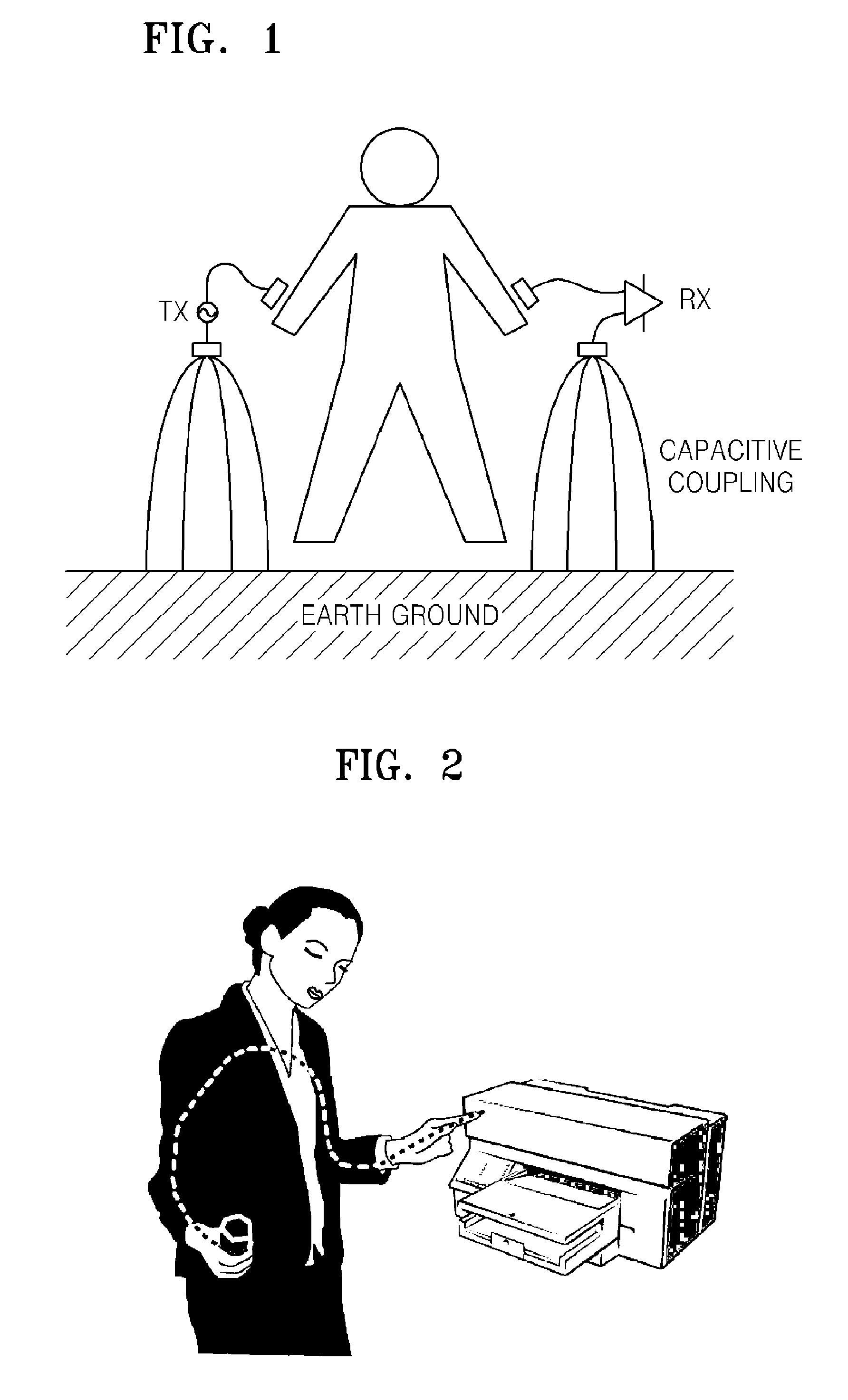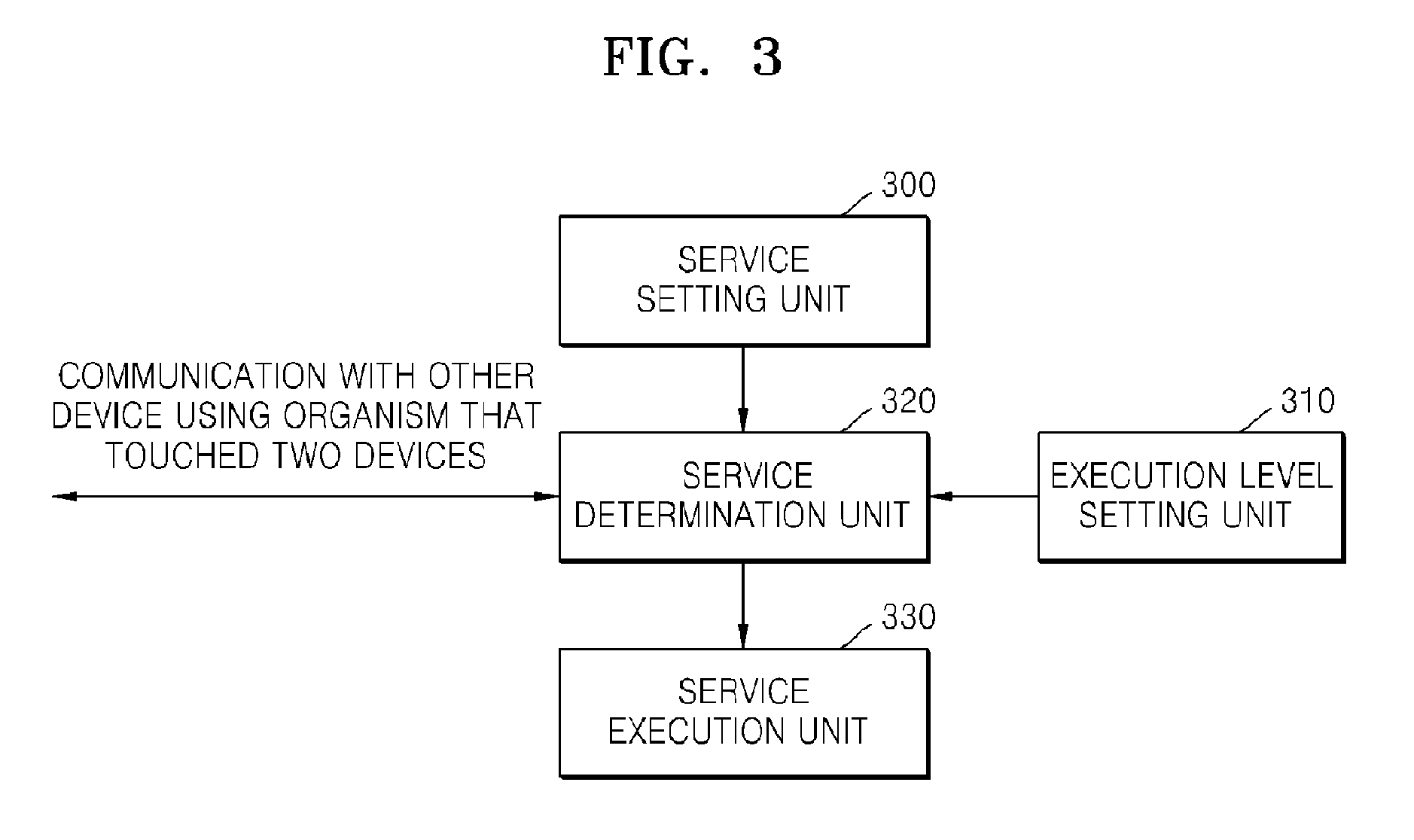Method and apparatus for providing touch and play (TAP)—based service and system using the method and apparatus
a technology of touch and play and apparatus, applied in the direction of program control, eavesdropping prevention circuit, instruments, etc., can solve the problems of unsatisfactory, unfavorable, and waste of users' time and effort, so as to prevent unintended interaction and expand the service
- Summary
- Abstract
- Description
- Claims
- Application Information
AI Technical Summary
Benefits of technology
Problems solved by technology
Method used
Image
Examples
Embodiment Construction
[0031]The present invention will now be described more fully with reference to the accompanying drawings, in which exemplary embodiments of the invention are shown. The invention may, however, be embodied in many different forms and should not be construed as being limited to the embodiments set forth therein; rather, these embodiments are provided so that this disclosure will be thorough and complete, and will fully convey the concept of the invention to those skilled in the art.
[0032]In the case of Bluetooth, if a user desires to print a picture from a personal digital assistant (PDA), the user has to search for a network and then an available device in the found network. Next, the user has to select a printer and connect the selected printer to the PDA. Then, the user selects the picture to print and selects a print menu. Finally, the user disconnects the network connection. Some of these operations may be preset with a few button clicks on a menu. Hence, the number of operations...
PUM
 Login to View More
Login to View More Abstract
Description
Claims
Application Information
 Login to View More
Login to View More - R&D
- Intellectual Property
- Life Sciences
- Materials
- Tech Scout
- Unparalleled Data Quality
- Higher Quality Content
- 60% Fewer Hallucinations
Browse by: Latest US Patents, China's latest patents, Technical Efficacy Thesaurus, Application Domain, Technology Topic, Popular Technical Reports.
© 2025 PatSnap. All rights reserved.Legal|Privacy policy|Modern Slavery Act Transparency Statement|Sitemap|About US| Contact US: help@patsnap.com



